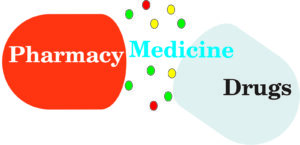Hemolytic anemia is a condition in which there is destruction of RBC or removal of red
blood cells from the circulation before their normal life span of 120 days. Many diseases,
conditions, and factors can cause the body to destroy its red blood cells. These causes can be inherited or acquired. “Inherited” means hemolytic anemia occurs due to mutated gene
passed from parents to offspring’s. “Acquired” means the person is not born with hemolytic
anemia, but condition develops later due to failure of his/her own immune system. This
happens because the immune system mistakenly recognizes these blood cells as foreign.
With acquired hemolytic anemias, red blood cells may be normal. However, some other
disease or factor causes the body to destroy red blood cells and remove them from the
bloodstream. The destruction of the red blood cells occurs in the bloodstream or, more
commonly, in the spleen. Acquired hemolytic anemia can be divided into:
- Immune Hemolytic Anemia
- Non- Immune Hemolytic Anemia
Types of Acquired Hemolytic Anemia
1. Immune Hemolytic Anemia: In immune hemolytic anemia, immune system destroys red blood cells. The three main types of immune hemolytic anemia are:
- Autoimmune hemolytic anemia (AIHA),
- Alloimmune hemolytic anemia,
- Drug-induced hemolytic anemia.
(1) Autoimmune hemolytic anemia (AIHA): In this condition, immune system makes antibodies (proteins) that attack red blood cells. AIHA accounts for half of all cases of hemolytic anemia. AIHA may come on very quickly and become serious. Certain diseases or infections can raise risk for AIHA are,
- Autoimmune diseases, such as lupus,
- Chronic lymphocytic leukemia,
- Non-hodgkin’s lymphoma and other blood cancers,
- Epstein-Barr virus,
- Cytomegalovirus,
- Mycoplasma pneumonia,
- Hepatitis,
- HIV,
- AIHA also can develop after blood and marrow stem cell transplant.
In some types of AIHA, the antibodies made by the body are called warm antibodies. These are active at warm temperatures and destroy red blood cells. In other types of AIHA, the body makes cold reactive antibodies. These antibodies are active at cold temperatures. Cold-reactive antibodies can become active when parts of the body, such as the hands or feet, are exposed to temperatures lower than 32 to 50º Fahrenheit (0 to 10º Celsius).Warm
antibody AIHA is more common than cold antibody AIHA.
(2) Alloimmune hemolytic anemia: This type of hemolytic anemia occurs if body makes antibodies against red blood cells that get from a blood transfusion. This occurs due to wrong blood transfusion. This type of hemolytic anemia also can occur during pregnancy if a woman has Rh negative blood and her baby has Rh positive blood.
(3) Drug-induced hemolytic anemia: Certain medication alter normal function of
immune system, In these cases, the immune system to mistakenly think the body’s own red blood cells are dangerous, foreign substances. Antibodies then develop against the red blood cells. The antibodies attach to red blood cells and cause them to break down too early. Drugs that can cause this type of hemolytic anemia include: Penicillin, Cephalosporin’s, Dapsone, Levodopa, Levofloxacin, Methyldopa, Nitrofurantoin, Quinidine, Nonsteroidal anti-inflammatory drugs (NSAIDs), and Phenazopyridine.
2. Non-Immune Hemolytic Anemia:
Non-immune hemolytic anemia associated with high reticulocyte count, slight or marked increase of lactate dehydrogenase (LDH), increase of indirect bilirubin, increase of free Hb in plasma with almost no detection of haptoglobin and negative antihuman immunoglobulin
(Coombs) test. Finally in hemolysis is find urobilinogen present in urines.
Non-immune hemolytic anemia occurs due to:
- Microbial infection like malaria, babesiosis, septicemia
- Mechanical trauma
- Antiviral agents (e.g., ribavirin )
- Toxins (e.g., snake venom; plant poisons such as aesculin)
- Paroxysmal nocturnal hemoglobinuria (rare acquired clonal disorder of red blood cell surface proteins)
- Acute viral hepatitis.

Related Feed
Anemia Symptoms Complications Prevention & Treatment Drugs Prescribed
Respiratory System | Respiratory System Diagram Drawing With Label
Anemia Risk Factors & Pathophysiology Of Its Types | Haematological Disease
Acute Kidney Failure/Renal Diagnosis| Symptoms| Treatments and Drugs
